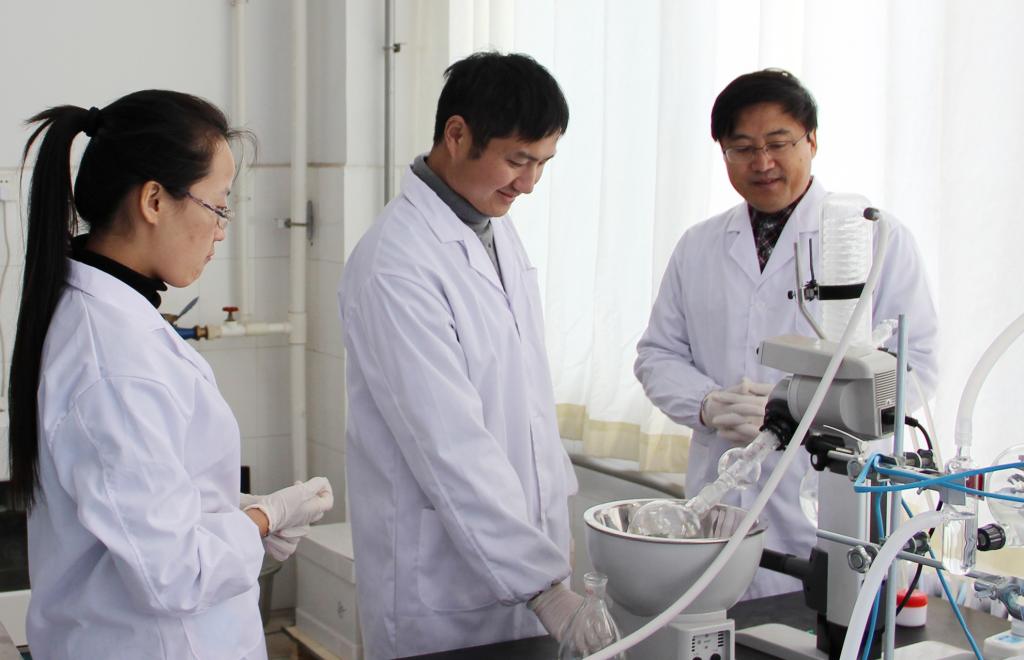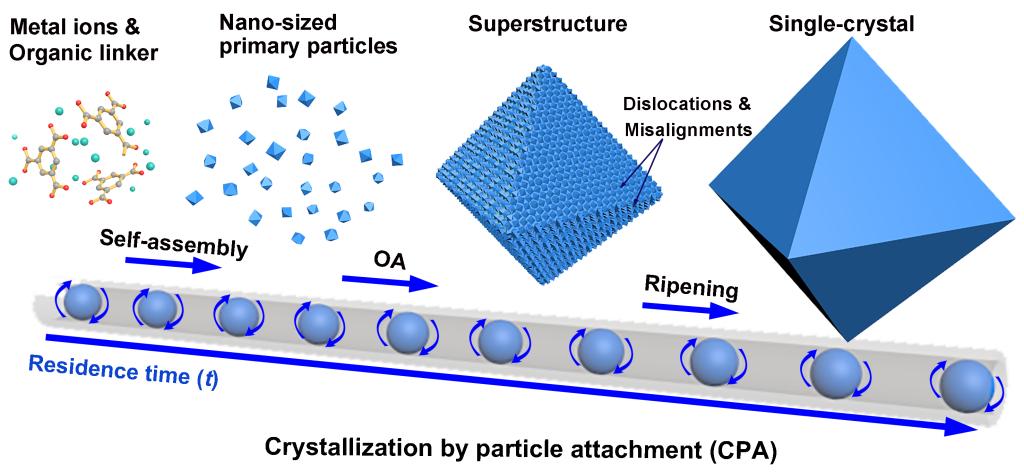Recently, an important research progress on crystal growth mechanism of a metal–organic framework (MOF), that revealed by Prof. ZHAO Xuebo’s group in the Institute of New Energy, has been published in the ACS Nano (2019, 13 (3), pp 2901–2912) . The title is “Superstructure of a Metal-Organic Framework Derived from Microdroplet Flow Reaction: An Intermediate State of Crystallization by Particle Attachment”. Dr Wang Ying is the first author on the paper, and Professor ZHAO Xuebo and Associate Professor Li Liangjun are co-corresponding authors of the paper, and the China University of Petroleum (East China) is the corresponding affiliation.


Metal-organic frameworks (MOFs) represent an emerging type of organic-inorganic hybrid crystalline materials. Due to its merits of highly ordered structure, a great variety, high apecific surface area and pore structure adjustable, MOFs has been considered as a promising candidate for a variety of applications, such as gas storage, gas seperation, drug carriers, catalysis materials, ionic conductors, optical materials, conductive materials, magnetic materials, and so on. However, in stark contrast with the fast development in aforementioned research fields, the crystallization process that plays a central role in the synthesis of MOFs has rarely been reported. In order to overcome this conundrum, many techniques, i.e. extended X-ray absorption fine structure (EXAFS) spectroscopy, on-line analysis method, in-situ spectroscopic techniques, and theoretical simulations, have been employed to explore the mechanism of crystallization for MOFs. These studies have made some progress in explaining the formation of MOFs crystals in last twenty years. However, it is still a big challenge to get a full landscape of crystallization process and understand the detailed mechanism of the reaction-crystallization process of MOFs. Therefore, the research on the crystal growth mechanism of MOFs is not only of great theoretical value, but also of great practical significance to promote the industrialization of MOFs.
In view of this, under the guidance of Prof. Zhao, Dr Ying Wang, Associate professors Liangjun Li and Pengcheng Dai utilized a home-made microdroplet flow (MF) reaction system to investigate the crystallization process of MOFs. The crystallization process of three MOFs with different structures and topologies: HKUST-1, MOF-5 and NOTT-100, were examined by using the MF technique. By adjusting reaction times and rapid termination reaction, the intermediate state of crystallization at earlier stages of crystal growth were successfully captured and characterized. According to the classical theory of crystallization, crystallization goes through two stages, the first is the formation of seeds, and then the smaller crystals grow up gradually. In the process of crystal growth, regardless of size, the internal structure is the same. But this study found that the crystallization of MOF under MF conditions comprises of the following three stages: a) the formation of nano-sized primary particles; b) the oriented attachment of these primary particles into superstructure; c) the ripening of superstructure into single crystals. At the beginning of crystal growth, the coordination reaction between the organic ligand and metal ions happened, and numerous nano-sized primary particles of MOF are generated, giving rise to a colloid solution composed of nano-sized primary particles. Then, these primary particles aggregated into a superstructure. This type of superstructure gradually transforms to true single-crystals through an Ostwald ripening effect upon increasing residence time (pictured below). This process is like building a house with a frame first and then add ing more bricks and tiles. Just as different houses have different frame structures, different metal-organic frame materials also have their own special superstructure, and this superstructure has special properties that different from its intrinsic metal-organic frame materials. The results of this study confirmed that the superstructure of HKUST-1 has higher adsorption capacities of methane and carbon dioxide. Thus, the superstructure is the intermediate state during crystallization and acts as the bridge between disordered reactants and highly ordered single-crystals. Besides, it also is a typical representative of the mechanism of CPA. The observations in this work are very helpful to understand the mechanism of crystallization for other types of MOFs and may shed a light in the engineering of crystal morphology, functionality and the engineering of device for MOFs in the future.

During the stage of reviewing, the reviewers of the ACS Nano gave a higher rating to this work. The reviewers commented that ‘It is of great importance in studying the detailed crystallization processes of MOFs because little has been revealed for many MOFs during the initial crystallization stage’, and ‘In this study, under MF conditions, intermediate products were successfully separated for further inspection, this reviewer is impressed by the careful study into the details and recommends the manuscript be considered for acceptance for publication’.
ACS Nano with the impact factor 13.709, a member of American Chemical Society, is an international forum for the important research communications and comprehensive articles on nanoscience and nanotechnology research at the interfaces of chemistry, biology, materials science, physics, and engineering.
Witten by ZHAO Xuebo
Updated: 2019-04-29